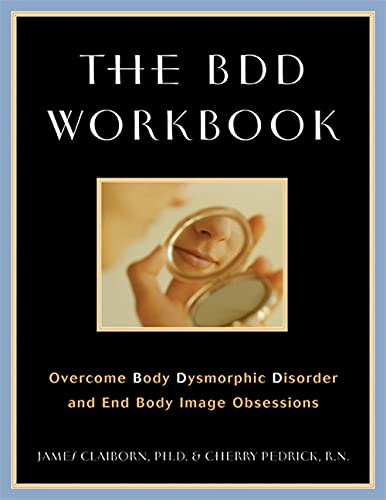
The BDD Workbook: Overcome Body Dysmorphic Disorder and End Body Image Obsessions
Do you struggle with constant feelings that your body is not good enough? Do you imagine that, if you could just change you appearance, you would be happier and more fulfilled? If you do, you might be dealing with the effects of a problem called body dysmorphic disorder (BDD).
Individuals who suffer from BDD are excessively preoccupied with the shape or size of their body-obsessed with a facial blemish, a minor bodily defect, or some specific aspect of their appearance. They spend hours each day thinking about their perceived deformity, checking and rechecking their appearance in the mirror, camouflaging themselves with makeup or clothing. Men affected by a form of BDD known as muscle dysmorphia are obsessively concerned about their muscular development, no matter how large and pumped up they are. In extreme cases BDD leads to unnecessary plastic surgery, serious eating disorders, steroid abuse, and even suicide.
The good news is that BDD is highly treatable with cognitive-behavioral techniques provided in The BDD Workbook in a step-by-step, easy-to-follow format. OCD experts Claiborn and Pedrick guide you through a proven intervention plan that helps you recognize your distorted self-perception and come to terms with how it leads you to self-inflicted emotional and physical pain. Exercises, charts, and worksheets help you to develop a healthier response to your body and a more balanced self-image. The book provides information about BDD-related eating disorders and the special problems of children with self-image issues. It also offers suggestions to help you gain support from family members, medical professionals, and support groups.
My Account Info
Manage your Membership information, email preferences, and more.
Journals
Membership in ABCT grants you access to three journals.
Convention
We are now accepting Abstract submissions for Continuing Education Ticketed Sessions at the 2024 ABCT Convention in Philadelphia, PA.
My Account Info
Manage your Membership information, email preferences, and more.
Journals
Membership in ABCT grants you access to three journals.
Convention
We are now accepting Abstract submissions for Continuing Education Ticketed Sessions at the 2024 ABCT Convention in Philadelphia, PA.
About the Author(s)
James Claiborn
James M. Claiborn, Ph.D., ABPP, is a licensed psychologist specializing in obsessive-compulsive disorders with Manchester Counseling Services in Manchester, NH.
Read MoreCherlene Pedrick
Cherry Pedrick, RN, is a freelance writer with over twenty year's experience as a nurse who is dedicated to helping people make positive changes in their physical, mental and spiritual lives. In 1994 she was diagnosed with obsessive-compulsive disorder, which...
Read MoreBack
